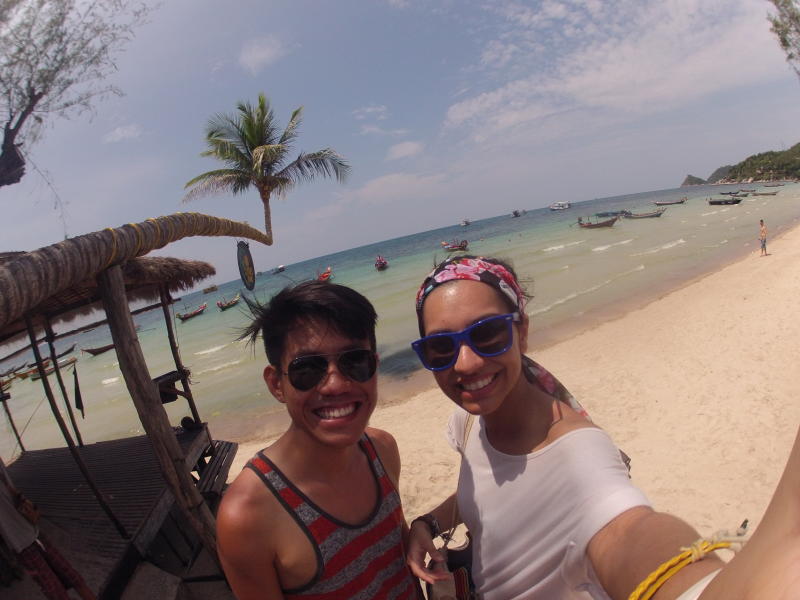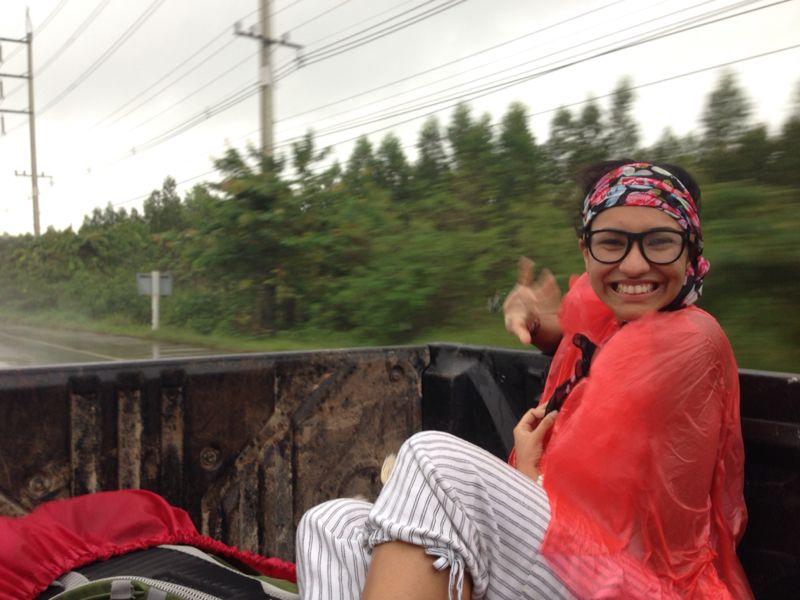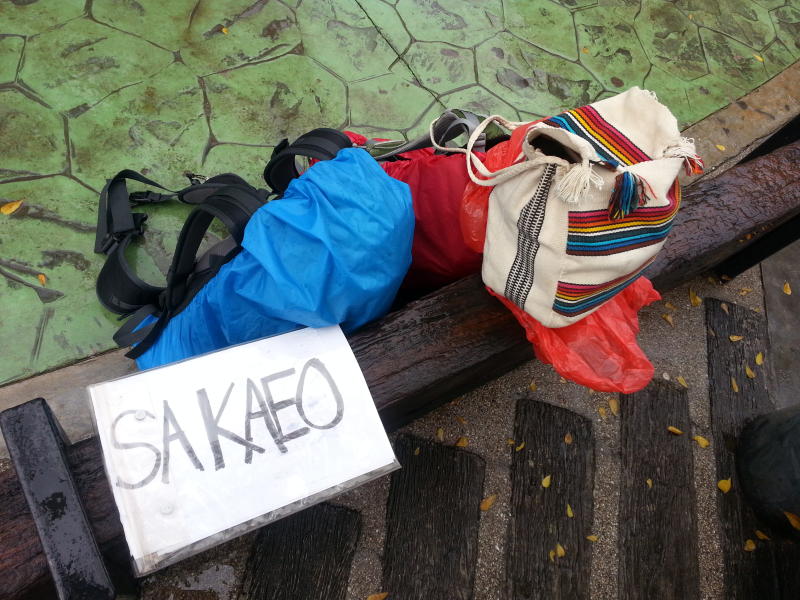By JAYDEE LOK
alltherage@thestar.com.my
IF you were to ask Bank Negara financial analyst Marisha Naz, 25, where the best pad thai in the world is, she would tell you to look for a roadside shack in Lat Krabang, Thailand and it would be cooked by an eight-year-old boy.
“I was really sceptical at first, but it turned out to be the best I’ve had so far!” said Marisha with a giggle while she and her partner-in-crime, market expert Kevin Hoong, 24, shared tales from their recent hitchhiking adventure.
The two met in Britain while pursuing their economics degrees at the University College of London. During their time there, they travelled all over Europe and even took part in a university fund raiser where participants were challenged to travel as far as they could in 36 hours. Marisha and Hoong made it to Brussels, Belgium.
That was where they got the idea to go on their own Southeast Asian hitchhiking adventure.
“It really just started from a conversation where we were reminiscing the good times we had in uni when we hitchhiked Europe and we wondered what the response would be like in Asia,” explained Marisha.

Trippin’: Kevin Hoong (left) and Marisha Naz taking a break at Ko Tao island in Thailand during their hitchhiking trip from KL to Cambodia.
With a backpack each and approximately RM400, the two set off on the journey of a lifetime and travelled from Kuala Lumpur to Phnom Penh, Cambodia within six days in October 2013. Not only did it literally show them the roads less travelled, but it also opened their eyes to a kinder side of humans that most of us might not expect from strangers.
“We weren’t as scared during our trip as when we were planning it. A lot of people said we might get murdered, or things like ‘I wouldn’t stop for hitchhikers’,” said Marisha.
But Marisha and Hoong are not the kind who would throw caution to the wind either.
“We took calculated risks,” said Hoong. “We really planned it to avoid all kinds of security issues. We made sure we didn’t hitch a ride during the night and that we were always in places where there are a lot of people. We prepared contacts for all the embassies.
“Things could have happened, maybe, but we took all the precautions and we obviously didn’t go into this with our eyes closed.”
Luckily for them, their trip was nothing like The Texas Chainsaw Massacre – none of the people that gave them rides turned out to be chainsaw-wielding serial killers, or had ulterior motives.
Unlike what they experienced in Europe, Marisha and Hoong found that Southeast Asians were quite responsive to hitchhikers.
“In Europe, if you stand by the side of the road with a sign, no one will stop for you. You have to approach them and tell them what you’re doing and convince them to take you,” said Marisha, as opposed to how she and Hoong had done it here.
In all three countries they went to – Malaysia, Thailand and Cambodia – the two stood on the side of roads with signs asking for a ride in the national language of each country. It worked like a charm.
“I think people were just curious about what we were up to,” said Hoong. “It’s not something they see every day.”

Marisha and Hoong held up signs written in the national language of the countries they travelled in (Malaysia, Thailand and Cambodia) to ask for rides.
Although neither of them spoke Thai, the two had what they called a “secret weapon” when asking for rides – a letter written in Thai by a friend explaining their mission.
“She must have written it in a very local and polite way because everyone who read it was just like ‘ah, I know what you’re doing now’,” said Marisha.
In places where they did not have the letter, Marisha and Hoong got by with a travel handbook and basic sign language.
“In Cambodia, a lot of people spoke English, but it was difficult to convey the concept of hitchhiking to them. When we tried to explain it to them, they would say ‘nobody does things for free here’,” continued Marisha.
Eventually, they did manage to get a ride from a “very sweet Cambodian family”.

While beggars can’t be choosers, hitchhikers enjoy being able to ride in different types of vehicles.
Although travelling to different countries by asking favours from strangers might not be for everyone, listening to Marisha describe their experience made it sound like something people should put on their bucket lists.
“We didn’t know which town we would end up in but the uncertainty is the beauty of it. We got to see towns and meet people and eat things we otherwise wouldn’t have if we had gone somewhere looking forward to seeing something,” she said. “It’s about letting the unknown surprise you.”
When asked if they would do it again, Hoong had just one word: “Absolutely”.
Hitchhikers’ guide to hitchhiking

Hoong says you should only pack about four days’ worth of clothes even if you’ll be travelling for a month. This is a picture of everything him and Marisha had on them when they hitchhiked from KL to Phnom Penh, Cambodia.
Marisha Naz and Kevin Hoong share their five tips.
1. Find a partner
Preferably someone of the opposite gender, for safety and cultural reasons. Avoid going with more than two people as a lot of vehicles won’t be able to accommodate any more than that.
2. Prepare a hitchhiking letter
Prepare a letter in the language of the country you will be going to explaining that you would like to share a ride and why. It helps you communicate better, and the locals really appreciate it.
3. Research the route beforehand
Familiarise yourself with the big towns and rest stops along the way to your final destination that you can mention to people. Also take note of any dangerous areas to avoid and the location of the nearest embassy and/or police stations.
4. Prepare sign boards and waterproof them in a plastic file
People need to know where you’re going, and it should be legible in the rain (it rains A LOT in South-East Asia). We’d recommend carrying markers and extra paper to rename the board throughout your trip. Avoid writing your final destination but aim for areas along the way because not every car that passes by will be going all the way there.
5. Hitch a ride from rest stops or gas stations.
The vehicles there are already stationary, which makes it easier to communicate with drivers. Plus it’s much safer and you’ll have some shelter in case you have to wait around.

Tell us what you think!